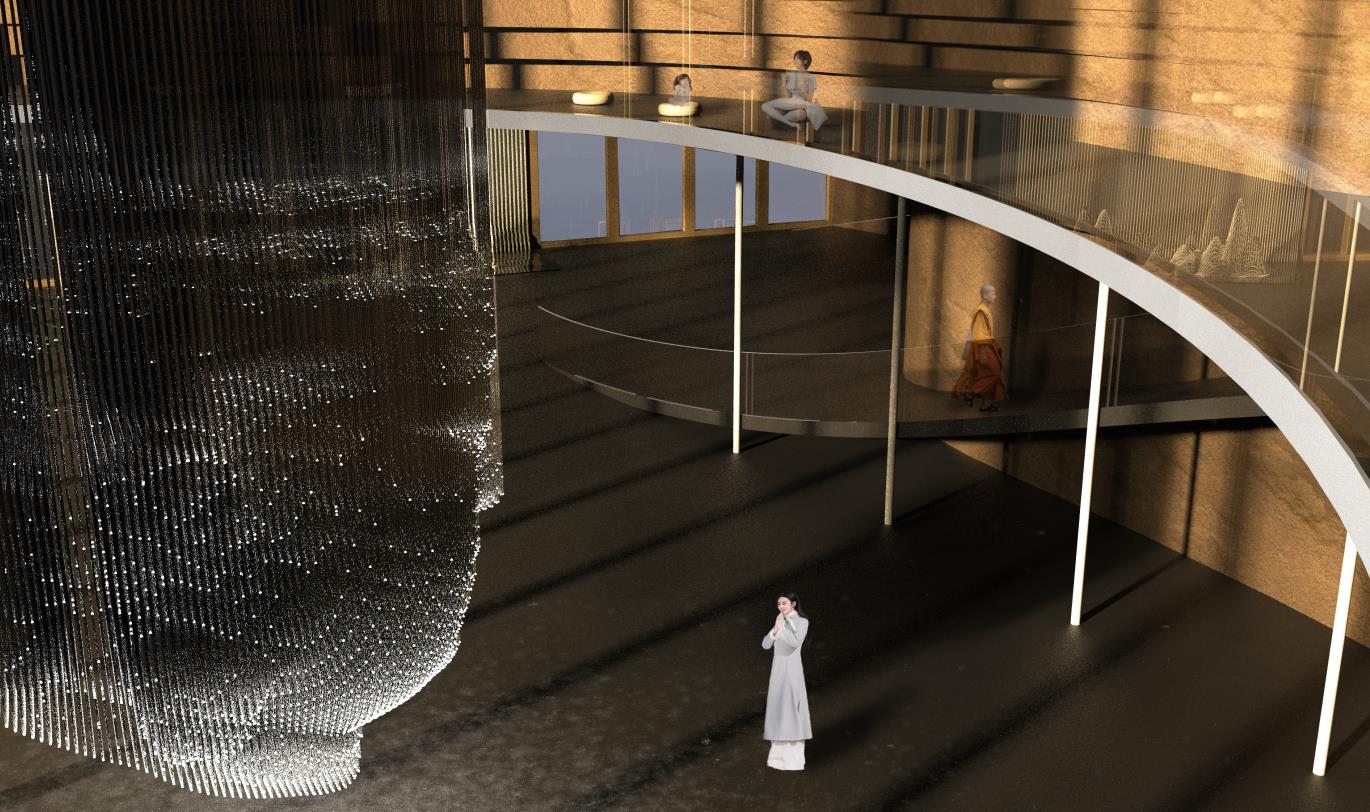Wenqing Cao

I have enriched my knowledge by studying interior design at GAS. I am happy to share and debate ideas, listen to others’ criticism and correct them in time. I usually draw scenes to train myself and read books about architecture.
Works

Boundlessmind
With the development of the times, Buddhist monasteries are now not only places for daily religious activities, but also indispensable spiritual and cultural places for building a contemporary harmonious society. However, some traditional monasteries have become difficult to fit in with modern lifestyles due to the limitations of their architectural space.
In contrast to the religious architecture of the West, the development of Chinese Buddhist architecture was caught in a rut, stagnating in a revisionist imitation of the old. Changes in Western concepts of science, technology and humanism have influenced other aspects of society, as well as the design of religious architecture. Along with the gradual change in the understanding of the role of religion, religious buildings in the West have moved away from the old ways. They have adopted modern ways of operating, accommodating modern aesthetics and integrating them into modern life. This is a subject worthy of study in Chinese Buddhist architecture.
At the same time, the psychological problems of modern young people have become a major problem in today’s society. They are keen to address this emotional anxiety, but have no means or methods to do so. However Buddhist thought can go some way to alleviating the initial anxiety and depression.
So how the space can become a spiritual place as Chinese temples and meets the needs of today’s society?








